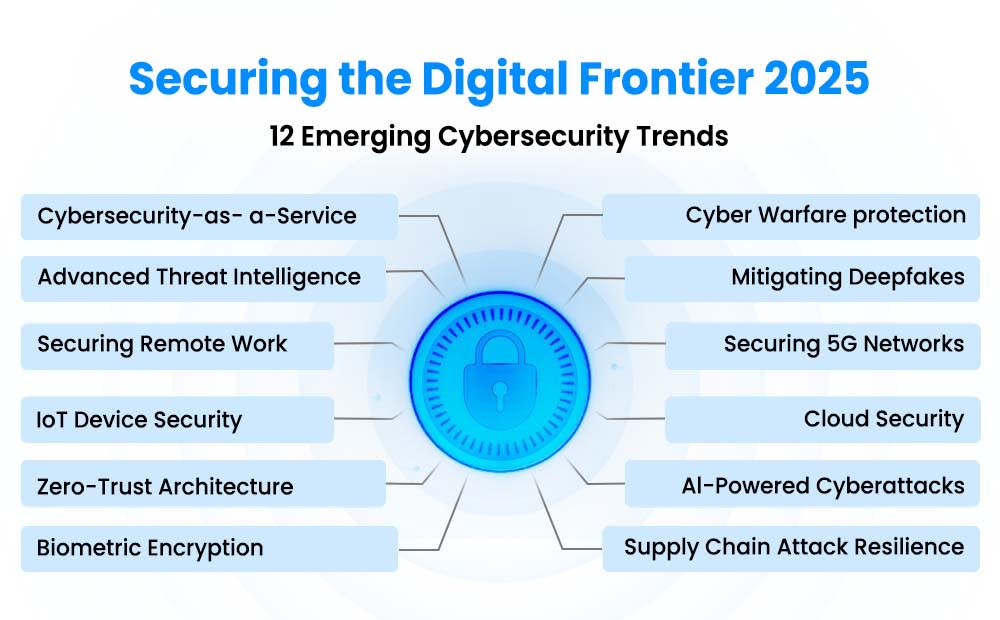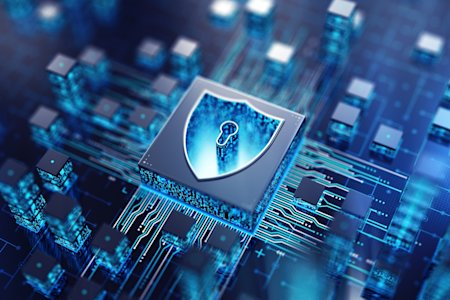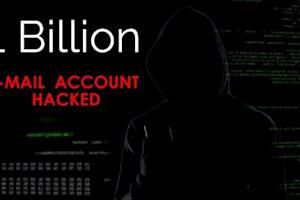Cybersecurity is evolving rapidly, and as we approach 2025, businesses face a digital landscape filled with growing threats and challenges. From ransomware attacks that now use "double extortion" tactics to the rise of AI-driven cyberattacks that can adapt and bypass traditional defenses, the stakes have never been higher.
The increasing reliance on third-party vendors has made supply chains a key target for hackers, while the shift to remote work has exposed businesses to risks like phishing, unsecured networks, and weak endpoints. Meanwhile, the proliferation of IoT devices has expanded the attack surface, with many of these devices lacking adequate security features.
Staying protected in 2025 will require more than just basic defenses. Businesses must adopt proactive strategies, leverage advanced tools, and foster cybersecurity awareness across their organizations. Let’s explore the top cybersecurity trends and what to expect in 2025.

Trend 1: Harnessing AI for Advanced Threat Intelligence
In 2025, artificial intelligence will play a pivotal role in transforming cybersecurity by enhancing both detection and mitigation efforts. AI-powered systems can process vast amounts of data in real time, using predictive analytics to identify potential threats before they materialize. This capability will be critical in a landscape where cyberattacks are becoming more sophisticated and harder to detect.
AI will enable businesses to monitor their networks continuously, flagging unusual patterns like suspicious login attempts or unexpected file transfers. Moreover, it will automate responses to incidents, neutralizing threats such as malware or phishing attempts without requiring human intervention. By 2025, organizations that effectively integrate AI into their cybersecurity strategies will have a significant advantage in staying ahead of emerging risks.
Trend 2: Adopting Zero-Trust Architecture for Robust Security
As cyber threats become more complex, the Zero-Trust security model will play a central role in cybersecurity strategies in 2025. Unlike traditional approaches that grant implicit trust within a network, Zero-Trust assumes that no entity—internal or external—should be trusted by default. Instead, it emphasizes continuous verification and robust access controls.
In 2025, businesses adopting Zero-Trust architecture will implement least privilege access policies, ensuring users only access the data and systems necessary for their roles. They’ll also leverage micro-segmentation to contain potential breaches, isolate compromised areas, and prevent lateral movement across the network. This approach is especially vital as remote work and hybrid environments continue to expand attack surfaces, making Zero-Trust an essential strategy for safeguarding sensitive systems and data.
Trend 3: Securing 5G Networks for Future Connectivity
In 2025, the continued rollout of 5G networks will revolutionize connectivity but also introduce new cybersecurity challenges. With faster speeds and lower latency, 5G enables more devices and systems to connect, expanding the attack surface for cybercriminals. These networks face risks such as data interception, unauthorized access, and vulnerabilities within the infrastructure itself.
To secure 5G networks, businesses must prioritize robust encryption to protect data transmissions and implement strong authentication protocols to verify users and devices. Network monitoring tools will be essential for identifying and mitigating potential threats in real time. By proactively addressing these vulnerabilities, organizations can ensure that their 5G-enabled operations remain safe and reliable throughout 2025.
Trend 4: Building Resilience Against Supply Chain Attacks
Supply chain cyberattacks will continue to be a major concern in 2025, with threat actors targeting suppliers and third-party vendors to infiltrate larger organizations. These attacks exploit vulnerabilities in interconnected systems, enabling hackers to compromise sensitive data or disrupt operations across multiple entities.
To combat this growing risk, businesses should focus on strengthening supply chain security. This includes thoroughly vetting third-party vendors, implementing regular risk assessments, and enhancing monitoring of supply chain activities. Developing contingency plans and diversifying suppliers can also help mitigate potential impacts. Building resilience against supply chain attacks enables organizations to better protect their ecosystems in 2025.
Trend 5: Embracing Cybersecurity-as-a-Service (CaaS) for Comprehensive Protection
In 2025, more businesses will turn to Cybersecurity-as-a-Service (CaaS) to handle the increasing complexity of managing security in-house. This trend highlights the need for scalable, on-demand solutions to combat evolving threats without requiring extensive internal resources.
CaaS providers offer a wide range of services, including threat detection, vulnerability assessments, and compliance monitoring, often powered by AI and advanced analytics. These solutions are tailored to meet the unique needs of each organization, providing real-time threat management and expert guidance. For smaller businesses without dedicated IT security teams, CaaS delivers enterprise-grade protection at a fraction of the cost.
Solutions like Splashtop complement CaaS offerings by providing secure remote access that integrates seamlessly with existing security frameworks. With features like end-to-end encryption, multi-factor authentication, and centralized management tools, Splashtop ensures secure and reliable connections for remote teams, making it an essential tool for businesses leveraging CaaS.
Incorporating CaaS alongside robust tools like Splashtop allows businesses to stay agile, secure, and focused on their core operations while maintaining comprehensive protection against attacks.
Trend 6: Strengthening IoT Device Security
In 2025, the explosion of IoT devices in both businesses and homes will bring unprecedented convenience—but also significant security challenges. Many IoT devices lack robust built-in security, making them vulnerable to exploitation by cybercriminals. These endpoints can serve as entry points for attacks, potentially compromising entire networks.
To address these risks, organizations must focus on securing IoT endpoints through strong authentication measures, such as unique device credentials and multi-factor authentication. Regular updates and patches are essential to address vulnerabilities and prevent unauthorized access. By prioritizing IoT device security, businesses can mitigate risks and ensure that the benefits of IoT adoption are not overshadowed by potential threats.
Trend 7: Enhancing Authentication with Biometric Encryption
As cyber threats grow more sophisticated in 2025, traditional password-based authentication will no longer suffice for many businesses. Biometric encryption is emerging as a powerful alternative, offering enhanced security through the use of unique physical characteristics like fingerprints, facial recognition, or iris scans. This technology not only strengthens user authentication but also reduces the risk of identity theft and unauthorized access.
Biometric encryption works by converting biometric data into encrypted keys that cannot be easily replicated or stolen. Businesses can integrate these systems into their access controls, ensuring that only authorized users can access sensitive data or systems. By adopting biometric encryption, organizations can enhance their security posture and adapt to the growing demands of cybersecurity in 2025.
Trend 8: Detecting and Mitigating Deepfakes to Preserve Trust
Deepfakes are expected to pose an even greater threat in 2025, as advancements in artificial intelligence make them harder to detect and more convincing. These fabricated images, videos, or audio recordings can be used for misinformation, fraud, or reputational damage, undermining trust in digital content.
Businesses can combat this threat by leveraging deepfake detection technologies that use AI to analyze content for inconsistencies or unnatural patterns. Regular training for employees to identify potential deepfakes and protocols for verifying content authenticity are also critical. By proactively addressing deepfake risks, organizations can protect their digital assets and maintain credibility in 2025.
Trend 9: Protecting Against State-Sponsored Cyber Warfare
State-sponsored cyberattacks will remain a significant concern in 2025 as nation-states continue to target critical infrastructure, private organizations, and government systems. These attacks are often highly sophisticated, involving advanced tools and methods designed to steal sensitive data, disrupt operations, or achieve geopolitical objectives.
To defend against such threats, businesses must prioritize robust cybersecurity measures, including strategic threat intelligence, to monitor emerging risks. Cyber warfare awareness training for staff and coordinated efforts with industry and government partners are crucial to building resilience. In 2025, a proactive approach to state-sponsored cyber threats will be essential for safeguarding sensitive systems and ensuring operational continuity.
Trend 10: Prioritizing Cloud Security
As businesses increasingly depend on cloud services in 2025, securing cloud environments will be more critical than ever. Cloud-based systems are vulnerable to various risks, including data breaches, misconfigured settings, and unauthorized access. The shared responsibility model of cloud providers and users further complicates ensuring robust security.
To mitigate these risks, organizations should adopt multi-cloud strategies, distributing workloads across multiple providers to reduce dependency on a single system. Implementing strong encryption for data in transit and at rest is essential to prevent unauthorized access. Additionally, compliance with industry regulations and regular security audits help maintain the integrity of cloud environments. By prioritizing cloud security, businesses can leverage the advantages of the cloud while minimizing vulnerabilities in 2025.
Trend 11: Preparing for AI-Powered Cyberattacks
In 2025, AI-powered cyberattacks are expected to become increasingly sophisticated, posing significant challenges to traditional security measures. These attacks leverage machine learning to adapt, automate, and outpace defenses, making them difficult to detect and mitigate. Examples include AI-generated phishing emails and adaptive malware that can bypass standard protections.
To counter these threats, businesses need to integrate AI-driven defenses capable of recognizing and neutralizing malicious activities in real time. Threat-hunting teams should actively search for potential vulnerabilities and anomalies across systems. Advanced analytics tools can provide deeper insights into patterns and behaviors, allowing organizations to anticipate and prevent attacks. Preparing for AI-powered cyberattacks will be a key priority for maintaining resilience against evolving threats in 2025.
Trend 12: Securing Remote Work: Addressing Emerging Vulnerabilities
In 2025, remote work will remain a fundamental part of modern business, but it also introduces unique cybersecurity challenges. With employees accessing corporate networks from various devices and locations, endpoint vulnerabilities and phishing attacks continue to be significant risks. Cybercriminals often target remote workers through unsecured connections or by exploiting weak personal device security.
To address these vulnerabilities, businesses must adopt robust security measures. Encryption ensures that data transmitted between remote workers and company systems remains secure, while multi-factor authentication (MFA) provides an added layer of protection by requiring multiple forms of verification. Regular training for employees on recognizing phishing attempts is also essential for reducing human error.
Splashtop’s secure remote access solutions are designed to help businesses overcome these challenges. By offering encrypted connections, MFA, and reliable performance, Splashtop ensures that organizations can maintain productivity without compromising security. Sign up for a free trial today and experience the peace of mind that comes with secure, reliable remote access.
Strengthen Cybersecurity in 2025 with Splashtop Secure Remote Access
As businesses gear up for the cybersecurity challenges of 2025, secure remote access is becoming a must-have for any solid security plan. Splashtop makes it easy with a powerful, scalable solution that keeps sensitive data safe and supports secure remote work environments.
With advanced security features like end-to-end encryption, multi-factor authentication, and device verification, Splashtop protects every remote session from unauthorized access. These tools help keep systems secure while letting employees work from anywhere without a hitch. Plus, it’s easy to set up and use, making it a great fit for businesses of all sizes.
Splashtop’s centralized management tools give IT teams total control over remote access, letting them monitor activity, respond to threats fast, and tighten endpoint security. It’s everything you need to stay ahead of growing cybersecurity risks in 2025.
By adding Splashtop to your security toolkit, you can protect your team, boost efficiency, and create a stronger IT setup. Splashtop’s secure remote access solutions are built to help your business tackle 2025’s challenges with confidence.
Try Splashtop for Free
Don’t wait for a cyberattack to catch you off guard. Take control now and see how Splashtop can keep your business secure while making remote work easier than ever.






